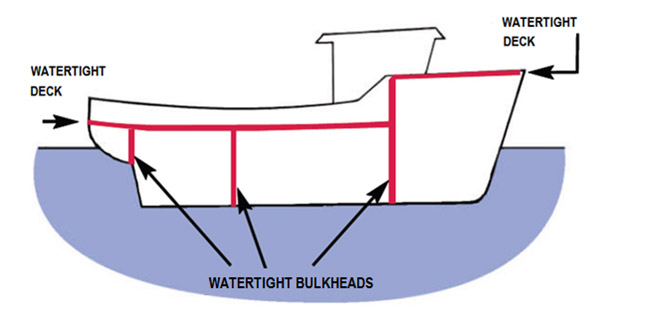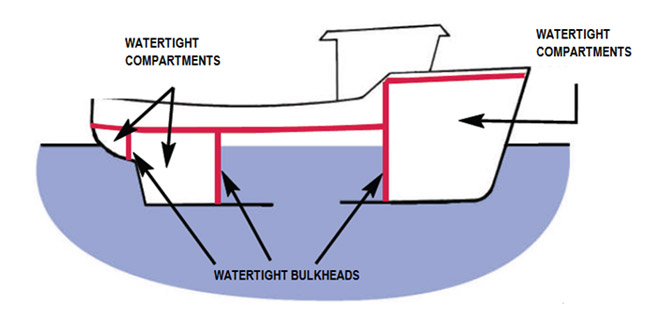Watertight and Weathertight Integrity
WATERTIGHT AND WEATHERTIGHT INTEGRITY
The vessel‘s hull must be tight to prevent water from entering the vessel. At the same time, closing devices to openings through which water can enter the vessel has to be in perfect order. This applies, among other things, to overboard- and bottom valves, hatches, doors, windows, portholes and vents.

Vessels are subdivided into compartments in order to minimize the effect of water flowing in the vessel and between watertight compartments.
“Watertight” means that water (or any other liquid) is not able to pass through the structure into or out of any of the watertight compartments. In other words, “watertight” means prevention from the passage of water in any direction. The vessel’s hull, main deck and bulkheads between watertight compartments must be watertight. Watertight bulkheads must be watertight at least up to the main deck. Any openings on such bulkheads must be equipped with watertight closing devices.
“Weathertight” means that water cannot penetrate into the vessel. Or in other words, weathertight means prevention from the passage of water in one direction only. Hatches, windows and portholes must be equipped with weathertight closing devices. The same applies for doors and other openings on enclosed superstructures.
